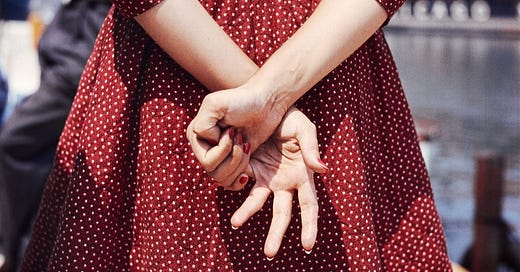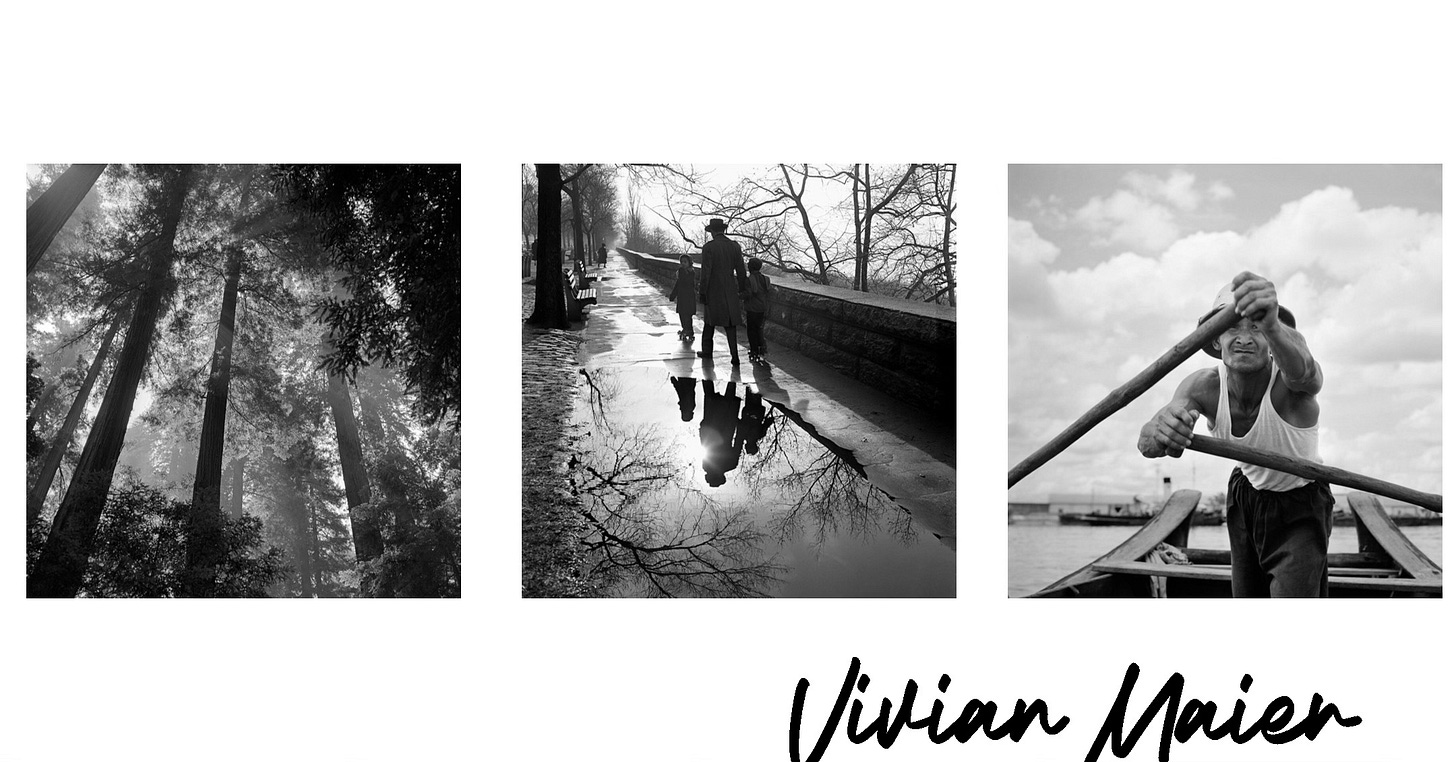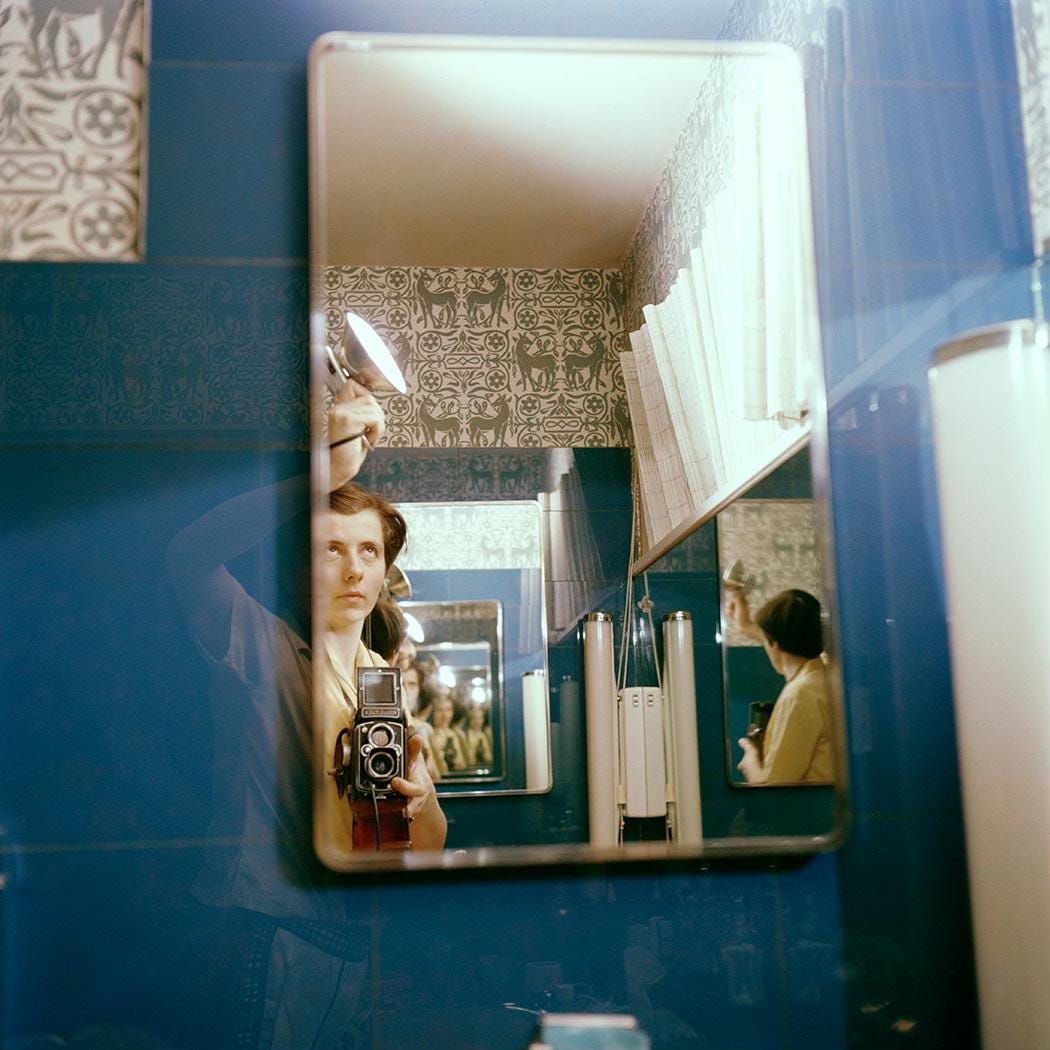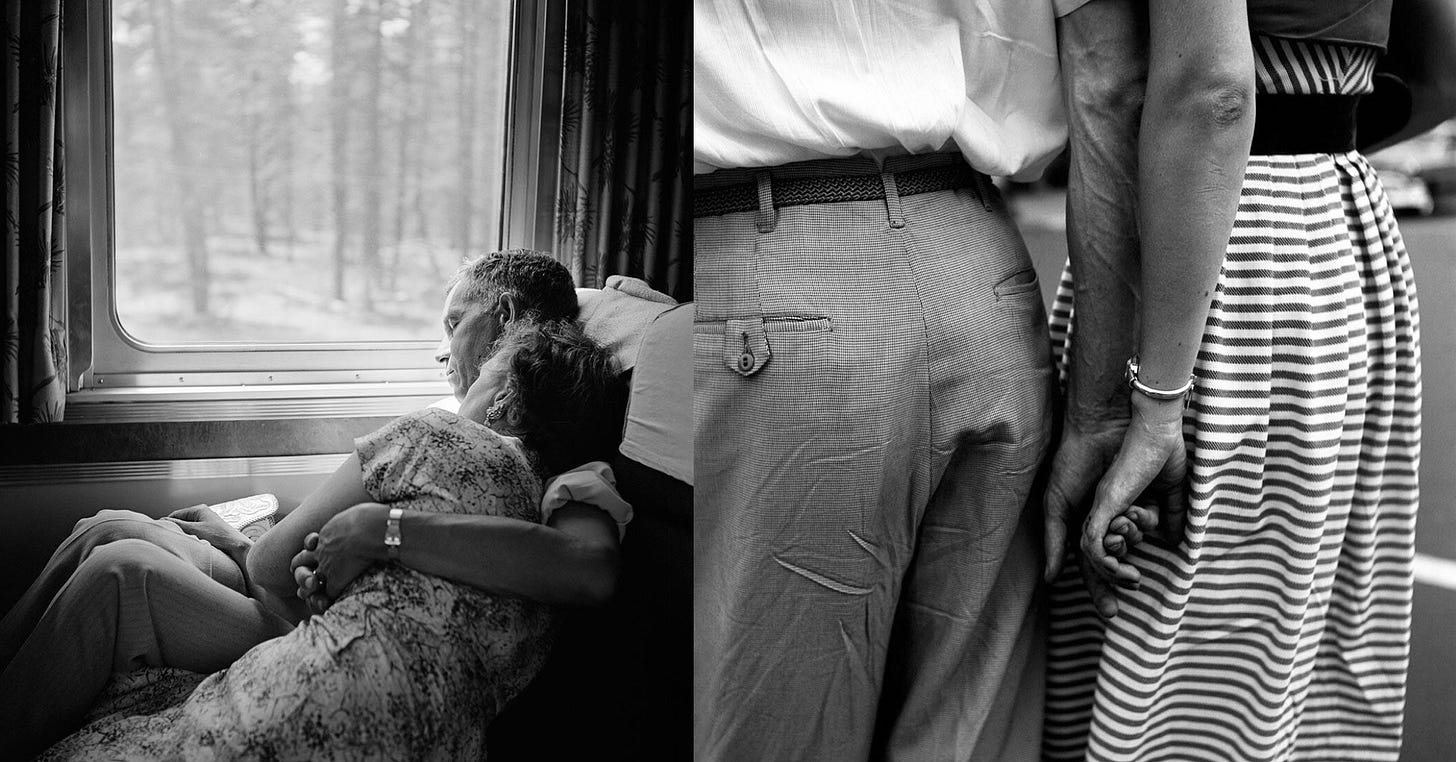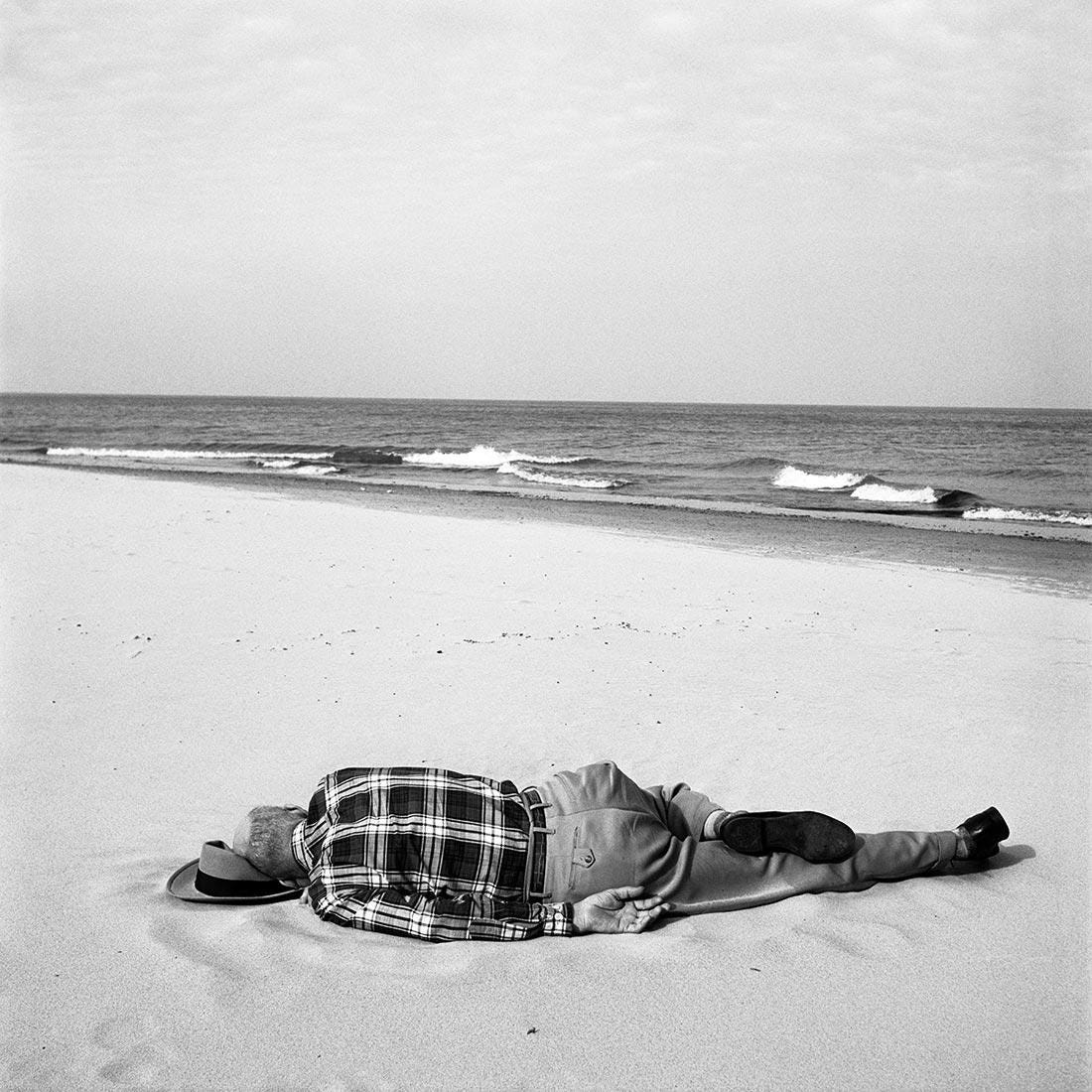On the Journey of Vivian Maier: Taoism and More
When I take a great shot and compare my first instinct: “I should share this on Instagram” to Viv's thousands of undeveloped rolls of film, I see a chasm.
Viv, who "looked as if she had stepped out of 1925" in her wide coat that did not reveal her features and her famous army boots, and in the shadow of her fedora hat, was photographing people without attracting their attention, thanks to her twin-lens Rolleiflex camera. When she fell through the ice and died not long after, Viv left behind more than 100,000 photographs - most of them undeveloped - in dozens of boxes.
Chasing Vivian Maier
John Maloof, who bought his photographs at auction, was thinking about how he would deal with dozens of boxes. And then he decided to consult a few museums. When he did not receive a positive response - including from MoMa - he took it upon himself to edit the photographs and open an exhibition at the Chicago Museum of Art.
Yes, just as you might think, Vivian Maier became famous posthumously for the rare street photographs we can see. There is a documentary about her life directed by Charlie Siskel: Finding Vivian Maier.
But in my article, I would like to talk about Viv's journey, not about this documentary. Or maybe it's more like 'being on the road.'
There is the same question mark in the documentary shot afterwards and in the articles written: Why did she not show these photographs he took while she was alive to anyone? There were times when she worked extra hard to prevent them from seeing her, always keeping the door of her room locked in the houses where she worked as a nanny. I searched for answers to this question on my own, and I took my place among those who "followed" Maier. I found my answers in Taoism.
Some Teachings from Tao te ching
Tao means ‘the way’.
There is a teaching in Taozim called wu wei, which means 'motionless action'. It is also called 'teaching without speaking' in the comments of Turkish writer Doğan Kuban. Not doing anything that would change the functioning of the natural mechanism.
And again, according to Taoism, “The person who knows does not talk much. Those who talk a lot don't know. Interrupt, dull the senses, restrict their entrance. Untie the ties. Avoid being dazzled by light. This is called glazed joining. Then it does not affect people near or far. Gain does not affect him/her, loss does not disturb his/her peace. He/she is neither moved by respect nor ashamed. He/she is the most valuable person in the world.”
With all these teachings, what I see when I turn back and look at that woman with short hair, a man's shirt, and her camera always hanging around her neck; she is how firmly she walks on her path and how she doesn't care much about the end of the road but always enjoys it. She is a street photographer who does not waste her time trying to teach others what she has discovered, but gradually improves her own eye. A woman who presses the shutter without hesitation even in bad, unpleasant and even tense moments. Vivian Maier, who does not forget herself and takes sphinx-like selfies on a car window, shop window or bathroom mirror.
When I take a great shot and compare my first instinct: “I should share this on Instagram” to Viv's thousands of undeveloped rolls of film, I see a chasm. While I am either living in the future or the past, I actually realize that she is always in the 'now', in the shot she took at that moment, in the looks that suddenly turned towards her. Thanks to the Rolleiflex she was looking at from above, she was photographing that moment without attracting people's attention, but even if they saw it, she still did not hesitate to take it. So much so that the children she nannied were sometimes ashamed of behaving like this.
New Yorker columnist Anthony Lane wrote of her, “Maier had an extraordinarily accurate eye – and was cool and likeable.” Evaluating his photographs, Joel Meyerowitz and Mary Ellen Mark clearly state that they can be compared to the photographs of Henri Cartier Bresson or Dian Arbus, and that she is at least as successful as them.
But Viv wasn't a photographer, she was a nanny. She specifically chose this job; Thanks to being a nanny, she could have her own private space and tons of time to spend on the street. Most likely her inspiration was the famous portrait photographer Jeanne Bertrand, with whom she lived as a child, but the hoarder Viv never mentioned her anywhere. Even though her obsession with accumulating everything she owns contradicts Taoism, we can understand that she has no interest in being permanent. Because in a short audio recording she keeps, she says: “I guess nothing lasts forever. We need to make room for others. It's a wheel.“
“In the path of Tao, winning is not the goal. Love or hatred does not affect a person. Because these are parts of the system. He/she who is on the path of Tao neither seeks prestige nor resents his/her shortcomings. The noble person is the one who is on the path of Tao.” says Doğan Kuban in his comments. In the selfie photos, Vivian is in a very neutral mood or she always has an unresponsive look on her face, the most we can see is a grin. Even though her income level is very low, her state of rebellion or resistance is not reflected in her photographs or records. Vivian Maier, who has never been to a doctor and has no insurance, is given to an acquaintance who asks if she is upset about this situation: "The poor are too poor to die." This answer can fall like a weight on our chest.
Sometimes a life ends like this, with all its poverty on the outside and all its richness on the inside...
Self-styled feminist woman, Viv, we give the same warnings to the printer when we print our photos: “Please print on matte paper, not glossy!”
I thank you for all the wealth you left behind and wish you a good sleep...
Photos taken from https://www.vivianmaier.com.

